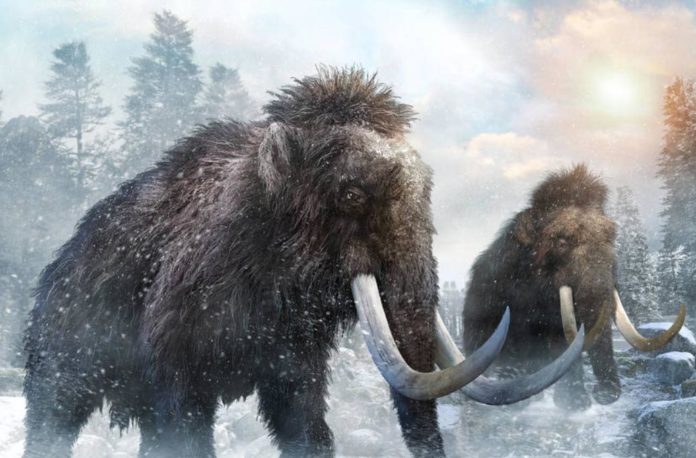Hundreds of woolly mammoths were trapped in the ice a thousand years ago. There are dozens of stories about the taste and texture of their meat (and not all of them are true)
In the Arctic cold, the frozen woolly mammoth bodies can be preserved so well that they still have blood in their veins. Its meat is still pink, which supposedly means yes, it could still be eaten. The stories about dining the ‘cousins’ of the elephants who had been trapped in the Ice Age range from the fantastic to the true and grotesque.
Let’s start with the fantastic stories. In 1901, an expedition to the Berezovca River in Siberia found a male mammoth so well preserved that it still had grass in its mouth. The bones and skin of the mammoth were exhibited in St. Petersburg, and their meat was allegedly served at a “mammoth banquet. ” The food was a success, according to the story. All the guests pointed out that the animal’s steak was pleasant to taste and not much harder than some of the conventional beef tenderloins.
Half a century later, the Explorers Club hosted its own “exotic” party in New York. This time, prehistoric meat came from a corpse found in the Aleutian Islands by a Jesuit turned geologist known as the Glacier Priest. On this occasion, each diner could only take some mammoth meat, but they were impressed, collects ‘The Atlantic’. The guests went home boasting of their Ice Age dinner. But ‘a posteriori’ they pointed out that they were not sure if the meat was supposed to be really mammoth, mastodon or an extinct lazy giant called megatherium.
In the 18th and 19th centuries, the natives of Siberia (the Evenki) occasionally fed their dogs with mammoth meat.
In any case, the DNA analysis of the meat of the dinner of 1951 finally showed that it was none of these animals. It wasn’t even prehistoric. Its DNA coincided with the green turtle, a modern and living species. As for the 1901 banquet, well, it couldn’t have been gigantic either. “All the stories published in this country’s newspapers about the St. Petersburg dinner are an invention,” palaeontologist I. P. Tolmachoff explained in ‘Transactions of the American Philosophical Society’ in 1929. Tolmachoff also noted that frozen woolly mammoth meat for tens of thousands of years is “absolutely disgusting” and has “an intolerable rotten smell.”
Attempts to eat mammoth
Once we know the legends, let’s go now with the true stories of eating – or trying – frozen mammoth. In the 18th and 19th centuries, Siberian explorers wrote that the indigenous people of the region, the Evenki, occasionally fed their dogs with mammoth meat. But, generally, humans have been less enthusiastic about the animal. And, although originally it could be tasty, for tens of thousands of years the meat becomes quite unpleasant.
But not only meat, but fat is also a problem for the palate. It becomes a substance called adipocere, also known as “corpse wax,” which is found in human bodies that die in cool, wet conditions. Similarly, palaeontologists indicated that it also becomes this substance for the same reason in woolly mammoths, except that it is believed that extremely cold conditions inhibit microbes.
This substance could have been formed in Siberia, according to Shari Forbes, a forensic expert at the University of Québec à Trois-Rivières, if the temperatures fluctuated for tens of thousands of years. The adipocere, he adds, has the texture of cottage cheese and stale smell. “That is why it is understood that people do not want to eat it!”
The muscle of frozen mammoths also varies over the years, such as meat that freezes for too long (in this case many millennia). The formation of ice crystals would pierce the muscle fibers of the meat, said Matt Hartings, a food chemist at the American University. Frozen, the mammoth can still be reasonably solid and, well, with a meat-like taste. But once thawed, he said, “it will become a sticky substance.”
